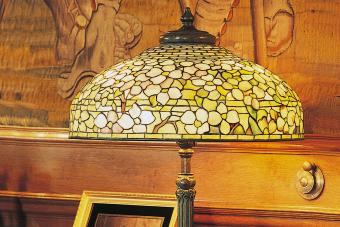
Antique balance scales are now considered works of art by collectors. However, before the invention of digital scales and other electronics, mechanical scales were used for thousands of years to measure almost everything and were even necessary to determine the value of most forms of money.
Types of Antique Balance Scales
There were several designs of scales that were used for the purpose of measuring. Equal arm balance scales were commonly used for a variety of different reasons. This type of scale was often modified depending on what it was used for.
Money Scales
Since the time of the Roman Empire, weighing coins of gold and silver was done using some type of mechanical scale. There were many types of scales that were used to measure the weight of coins including equal arm balance scales, steelyard scales (a type of unequal arm balance lever scale), pocket scales and rocker balance scales.
Equal arm balance scales that were used for weighing money were designed to be accurate and small enough to transport from one place to another. The scales had their own fitted wood or metal containers.
By the late 1700s, scales were being designed with improved accuracy and sensitivity. This was accomplished by making the scales lighter, smaller and built with better hinges. The pocket scale was invented in 1770, which consisted of a small equal arm balance scale that was inside a small box. The scale was good for measuring small coins.
Rocker balance scales were invented in 1817. The weight of the coin had to be exact in order for these scales to be balanced. This scale could also be used to measure the diameter and thickness of a coin.
Postal Scales
Antique postal scales are favored by collectors. Many types of scales were used as postal scales including spring scales, pendulum scales and equal arm balance scales with pans that hung below the arms and pans that were placed above the arms. The scales were used to measure the weight of letters and other small packages to determine the amount of postage needed.
Analytical Scales
Science had advanced far enough by the 1700s to warrant the need for extremely accurate and sensitive scales. Doctors, pharmacists and chemists used analytical scales, which had very small central beams and small delicate pans made from glass or brass. These scales were usually built into a box, with every precaution being taken to ease the friction on the hinges, helping to increase the scales' accuracy. A level and screws were used to adjust and fine tune the scales when needed. These scales were so sensitive that they needed to be kept in a glass case because dust and moisture can actually affect their accuracy.
How Equal Arm Balance Scales Work
Equal arm balance scales have been used for thousands of years. The simple design begins with a beam that is balanced at its exact center on a hinged set at right angles to the beam. This point is called the fulcrum. Equal weighing pans are suspended on each end of the beam. The pans are also an equal distance from the fulcrum, which is where the beam's center of gravity is located.
The object to be weighed is placed in one pan. Different amounts of weights are added to the other pan until the beam is balanced again, meaning it is completely horizontal. The weights are then added together to determine the total weight of the object.
There are a few factors that will affect how sensitive or accurate a balance scale is. The amount of friction on the hinges can make a difference and so can the total mass of the scale itself. The length of the beam can also affect the scale's accuracy.
Collecting Antique Scales
If you are interested in collecting antique balance scales or any other type of antique scale, you should start by visiting the International Society of Antique Scale Collectors. Here, you can learn about the evolution and history of antique scales, and you can also network with other collectors. You can also join this group, which has an annual convention and regional meetings. You will also be notified of upcoming scale auctions and private sales.







